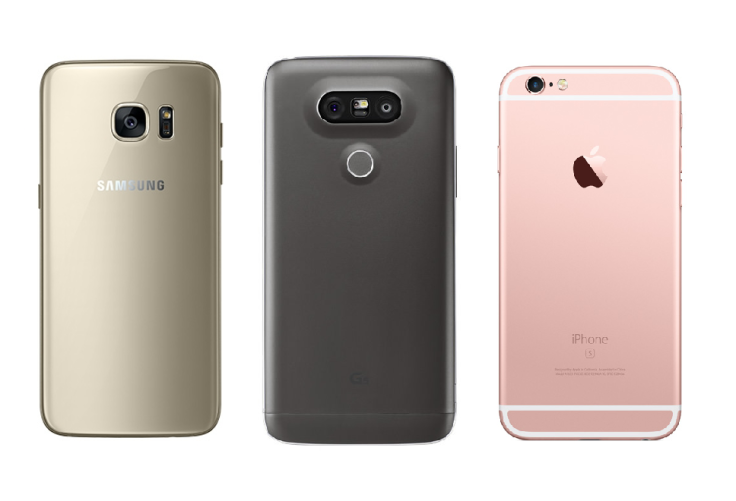The highly anticipated Samsung Galaxy S7 was finally unveiled at Mobile World Congress 2016 in Barcelona and the latest Korean flagship once again boasts Android smartphone-leading specs. Obviously, Samsung’s main rival in the smartphone arena is the Apple iPhone and the two mobile titans have created innovations that defined the market over the years. While both Samsung and Apple continue to incrementally evolve its devices, LG turned out to be the big surprise at MWC 2016 when it dropped its radical new G5.
The LG G5 challenges Samsung’s flagship with some very impressive specs: It matches the processing power of the Galaxy 7 with a Snapdragon 820 processor and 4GB of RAM. Display-wise, the LG G5’s 5.3-inch IPS Quantum screen is slightly smaller than the 5.5-inch from the previous G4. That said, it is still larger than the Galaxy S7's 5.1-inch quad HD Super AMOLED screen. Both phones feature sharp 2,560×1,440 resolution.
Next, from a pure numbers standpoint, the G5’s dual rear-facing cameras (16MP standard and 8MP 135-degree wide angle) overshadow the Galaxy S7’s single rear-facing 12MP camera. Perhaps the only parameter that the Galaxy S7 holds over the LG G5 is its larger 3,000mAh battery to the LG’s 2,800mAh pack.
Despite the iPhone’s notorious industry standard-setting performance, its hardware specs were never particularly impressive on paper. The dual-core 1.84 GHz A9 processor and 2GB of RAM inside the iPhone 6s Plus pales against the latest Snapdragon powerhouse within the new LG and Samsung. What’s more, both the 4.7-inch 1334x750 Retina HD display iPhone 6s and 5.5-inch 1920x1080 Retina HD display iPhone 6s Plus produce inferior resolution compared to the sharper displays from the Korean competitors.
The Samsung Galaxy S7’s 12MP camera was intended to match the iPhone 6s’ 12MP hardware. While picture quality can only be compared in a head-to-head hands-on review of all three phones, the specs of the LG G5’s dual camera setup suggests the LG offers more superior and more versatile hardware over the S7 and iPhone 6s.
Even with all the top shelf hardware considered, the real party piece of the LG G5 is its exciting "Friends" feature and modular design. The extra attachable modules, called Friends, exponentially expands the functionality of the LG G5. A small key on the side of the phone pops open its lower section to accept accessory peripherals.
The LG Cam Plus offers a larger grip complete with dedicated camera buttons designed for single-handed photography. The Friend features a physical shutter button, dedicated video recording key, and dial switch for camera zoom and 30% more battery.
Another Friend module known as LG Hi-Fi Plus features an external 32-bit DAC and amplifier developed in collaboration with Bang & Olufsen. Next, and LG Rolling Bot toy is a clever take on the Sphero ball. The ball can be controlled via the LG G5 and features a camera that allows the user to monitor and play with pets at home remotely.
Finally, LG also unveiled its new LG 360 Cam and LG 360 VR headset. Unlike the clunky designs of rival VR headsets like the Samsung Gear VR, LG introduced a significant weight-saving solution for its goggles by connecting the G5 to the VR unit via USB-C cable. The 360 VR only weighs about a third of the weight of the Samsung Gear VR and with a dual 1.88-inch 960 x 720 display, it doesn’t compromise on performance whatsoever.
If this comparison article is making me sound like an LG fan boy, that’s because the new G5 totally made me become one. I’ve never paid much attention to LG in the past but the little-Korean-smartphone-player-that-could pulled out all the stops for its latest flagship. In fact, not only does the new LG G5 match and even exceed the specs of its rivals, I would be surprised if I do not see more smartphones in the future copy LG’s modular design.


















